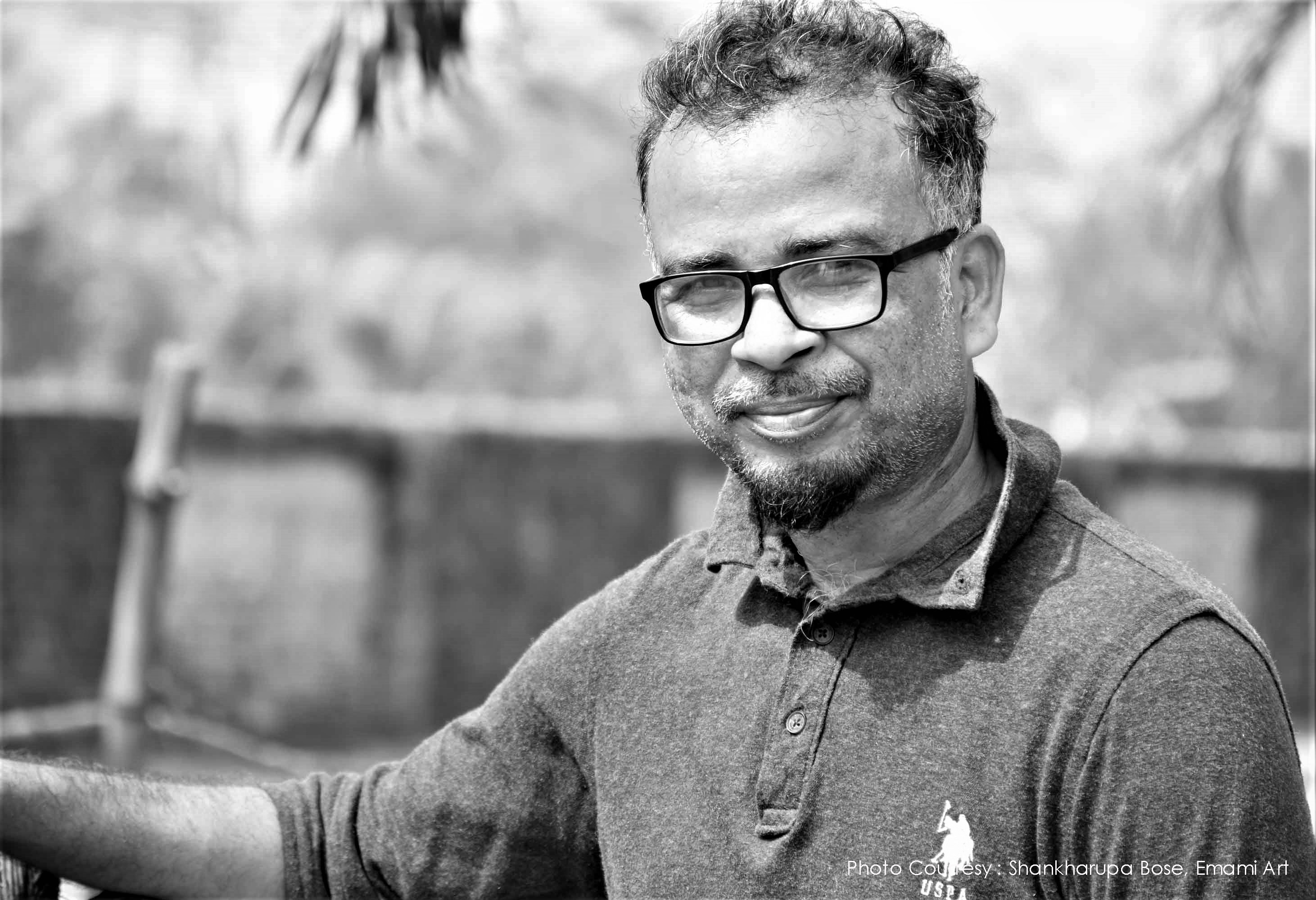Tapas Biswas

Born in Kolkata, West Bengal. Biswas has completed his Bachelors from Govt. College of Art and Craft, Kolkata in 1998 and Masters from Benaras Hindu University in 2000.
Tapas expresses himself without hectoring stridency surfacing with a surprise. His bronze sculptures, despite the human effort, the electrical power, casting and other means used to create the sculptures act as homage to ‘paved down simplicity’ of the metal and grid. The diagram that joins the matrices is never an optical effect, but an unbridled manual power, a spectacle that forces the eye to confront this manual power as if it were a remote power. However, his hands exude with cerebral potency and deep, primal energy- figurative markers celebrating and filling up the space that they navigate vividly rendered and studded with astringent apercus.
“I always want to create a sculptural space through a rundown simplicity of the metal and grid.” However, in his hands they are invested with a deep, primal energy- figurative markers celebrating and filling up space that they navigate unabandon. He draws the attention of his spectator to some bare movement and the collective force of human activities. The conceptual space is like a quartet in an analysis of ideological mechanism- space that act as a site where humans work out their destiny, human experience the “wholeness’ of existence for to exist and engage the violent dynamic that has no other object than the return to a lost totality. Such encounters open the interior experience of wholeness and their truth is known only because of a set of accidents. This sculptural ground, this rhythmic unity of senses can only be discovered only by going beyond the organism. Tapas covers up with sheer power.
“I invite my viewer to that space as my own experience abides in another space.” A collapse or decay is not the reigning spectre in these bronzes; instead, they are pervaded by lightness, exhilaration – to maintain a realist balance that has long ceased to be a picture fable.
The first forces he creates are those of isolation, they are supported by the fields of wire, and become visible when they wrap themselves around the contour and wrap the fields around the figures. Along with the forces of dissipation, when the figures fade away and return to the field, what when renders the sculpted forces visible that sweeps with an extraordinary energy, but which they render visible by extracting from it a kind of polygon or diagram and beyond that. In Benares Tapas Biswas imposes on his images is a closed world, a world at rest, dances in frieze, a world of infinite duration -a blend of intimacy and decorum. The entire site of the city reaches the grandeur of its own mystery in an endless look. The historical progression or retreat of time in this ancient city is confined by the sense that movement happens within the province of proportional space or of measurable historical time. This sculptural ground, this rhythmic unity of senses, can only be discovered only by going beyond the organism. We can seek the unity of rhythm only at a point where rhythm itself plunges into the chaos of the even, where the differences of level are perpetually and violently mixed. He varies staccato rhythms with fluid ones. Its essential emotional content extends far beyond its socio-political context and stretches itself to touch the eternal human spirit- for which he has more faith and appetite.
He has participated in numerous solo shows and group exhibitions in Kolkata, Hyderabad, New Delhi and abroad that includes Sweden, France and Singapore. He has participated in various symposiums and camps that includes Penza, Russia, 2015; International Sculpture Symposium in Baroda, 2010; Thimpu, 2009. In Kala Bhavana, Santiniketan organized by Lalit Kala Akademi, 2006 and several others.
His important commissions include Sculpture in Bronze, Delhi Airport Link Metro Station, 2010; Reliance Communications, Mumbai, 2013. Sculpture in Iron, Rajarhat, Kolkata, Govt. of West Bengal, 2012.
He was also the recipient of Junior Fellowship from HRD Ministry, Govt. of India.
The artist resides and works in Kolkata.